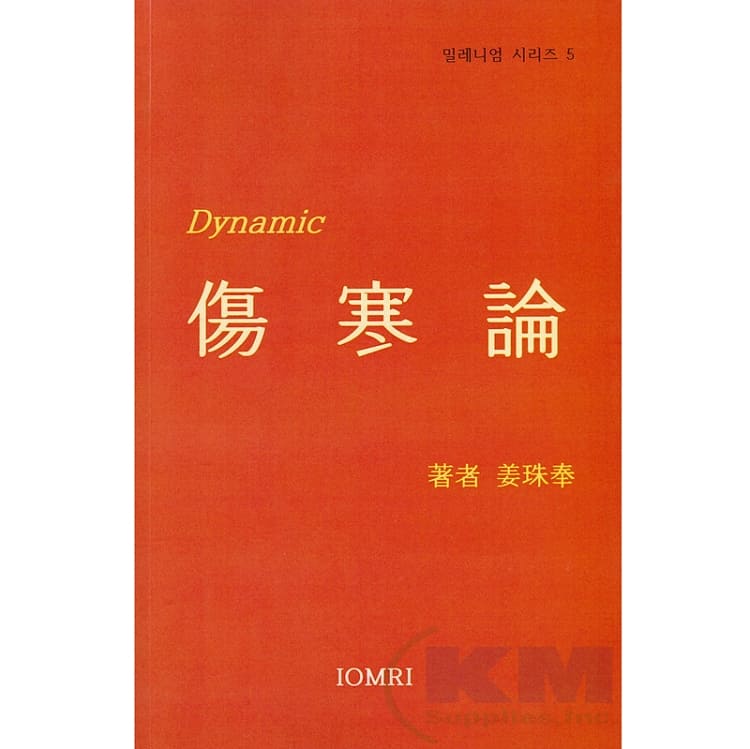No products in the cart.
The Dynamics of Shang Han Lun
$30.00
SKU: 9190-1
Categories: 1. Books (English), Educational Material
The Dynamics of Shang Han Lun
- Written by: Joobong KangISBN: 978-0-9911152-0-4Publisher: IOMRIPages: 142Format: Paperback
Dr. Kang, a noteworthy author from South Korea, has been praised for his authentic discoveries in Eastern Medicine. In his new book, Kang integrates his years as a practitioner to bring out the practicality of an ancient Chinese text, Shang Han Lun.
In the Dynamics of Shang Han Lun, Kang interweaves the “Organ Identification Theory” of Traditional Chinses Medicine, “Sign Symptom Threatment Theory” of Japanese Traditional Medicine, and “Four Constitution Theory” of Korean Traditional Medicine to deepen the readers’ understanding of not only how to correctly prescibe herb medicine but also to decipher a symptom into pathophysiology.
With his thorough analysis and vivid illustrations, Kang accurately pinpoints all the crucial elements to even those that have only basic knowledge of Eastern Medicine. Students and practitioners of all levels should read this book, filled with noble insights, to fully master the art of Eastern Medicine.
Preface
For those who study Eastern Medicine, the most important object is to find and understand in a scientific manner, the effects of herbs on the human body and how they treat symptoms of a patient. But this notion is difficult for western students who are trying to learn Eastern Medicine because our culture, perspective, and upbringing are so different. So to help our western students to understand this foreign notion, three different theories will be introduced in this book.
The first theory introduced is called ‘Sign Symtom Treatment Theory’, which was developed by a Japanese traditional doctor Yoshimasu Todo in 18th century. Sign symtom of ‘Sign Symtom Treatment Theory’ explains the relationship between herbs and various symptoms as the foundation to correctly translate the meaning of sentences described by Zhong Jing in Shang Han Lun.
The second theory introduced in this book is called “Four Constitution Theory’. The notion of constitution was first mentioned in “Ling Shu” of “Nei Jing”, and it exerted influences on formulas in the “Shang Han Lun”. But in the 19th century, a Korean traditional doctor, Lee Jae Ma, fully developed these theories. “Four Constitution Theory” is similar to organ (zang fu) theory but has a characteristic of digital rather of analogue. Therefore, this theory gives the reader insight to be prepared to interpret “Shang Han Lun” in real terms rather abstract ideas or ambiguity.
The third theory introduced in this book is known to many of us as “Herb Property Theory” of Traditional Chinese Medicine. This theory conbines the content of “Four Constitution Theory” and “Sign Symptom Theory”. All these theories are used harmoniously together for the comprehensive interpretation of Shang Han Lun.
In summary, “Organ Identification Theory” of Traditional Chinese Medicine, “Sign Symtom Treatment Theory” of Japanses Traditional Medicine, and “Four Constitution Theory” of Korean Traditional Medicine are three aspects that are all included in “Shang Han Lun”.
If “Shang Han Lun” is researched by the terms “Sign Symtoms” with “Four Constitution Theory” and with “Herb Property Theory” linked to “Organ Identification Theory”, then a clear, dymanic concept, which the author Zhong Jing would express in his book “Shang Han Lun”, can be understood.
Even though this small book contains only requisite contents, my hope is that all western students who want to learn Eastern Medicine are able to find a precise and easy way, based on the concrete terms offered in this book to comprehend these three interelated theories as dynamic whole.
I want to express my deep gratitude to Dr.Jong Hwa Lee and Edward Choi for their undivided support. Thanks to Kim, Sylvia, Suzanne for their kindness and proof reading content in this book. And I give special thanks to God who gave me the grace to finish writing this book.
October 2013
Joobong Kang
NOTE: Books are final sale items and not eligible for return unless defective.
| Weight | 9 oz |
|---|---|
| Dimensions | 6 × 9 × 2 in |
Related products
3. Charts
$26.99
$79.99
$79.99
2. Books (Korean)
$96.00
1. Books (English)
$99.95














